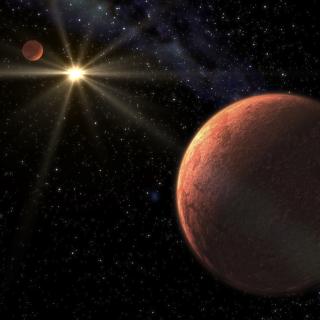Bibcode
Borsa, F.; Calcidese, P.; Bignamini, A.; Bonavita, M.; Bedin, L. R.; Affer, L.; Barbieri, M.; Andreuzzi, G.; Lanza, A. F.; Nascimbeni, V.; Gratton, R.; Gandolfi, D.; Benatti, S.; Marzari, F.; Sozzetti, A.; Biazzo, K.; Damasso, M.; Claudi, R. U.; Bonomo, A. S.; Desidera, S.; Christille, J. M.; Cosentino, R.; Covino, E.; Esposito, M.; Giacobbe, P.; Harutyunyan, A.; Latham, D.; Lattanzi, M.; Leto, G.; Lodato, G.; Lovis, C.; Maggio, A.; Malavolta, L.; Mancini, L.; Martinez Fiorenzano, A. F.; Micela, G.; Molinari, E.; Mordasini, C.; Munari, U.; Pagano, I.; Pedani, M.; Pepe, F.; Piotto, G.; Poretti, E.; Rainer, M.; Ribas, I.; Santos, N. C.; Scandariato, G.; Silvotti, R.; Southworth, J.; Zanmar Sanchez, R.
Referencia bibliográfica
Astronomy and Astrophysics, Volume 567, id.L6, 6 pp.
Fecha de publicación:
7
2014
Revista
Número de citas
33
Número de citas referidas
30
Descripción
We performed an intensive radial velocity monitoring of XO-2S, the wide
companion of the transiting planet-host XO-2N, using HARPS-N at TNG in
the framework of the GAPS programme. The radial velocity measurements
indicate the presence of a new planetary system formed by a planet that
is slightly more massive than Jupiter at 0.48 au and a Saturn-mass
planet at 0.13 au. Both planetary orbits are moderately eccentric and
were found to be dynamically stable. There are also indications of a
long-term trend in the radial velocities. This is the first confirmed
case of a wide binary whose components both host planets, one of which
is transiting, which makes the XO-2 system a unique laboratory for
understanding the diversity of planetary systems.
Based on observations made with the Italian Telescopio Nazionale Galileo
(TNG) operated on the island of La Palma by the Fundacion Galileo
Galilei of the INAF at the Spanish Observatorio del Roque de los
Muchachos of the IAC as part of the programme Global Architecture of
Planetary Systems (GAPS), and on observations made at Asiago, Serra La
Nave, and Valle D'Aosta observatories.Table 2 and Fig. 3 are available
in electronic form at http://www.aanda.org
Proyectos relacionados

Estrellas de Baja Masa, Enanas Marrones y Planetas
Se investigan los procesos que conducen a la formación de estrellas de baja masa, enanas marrones y exoplanetas y caracterizar las propiedades físicas de estos astros en varias etapas evolutivas. Las estrellas de muy baja masa y las enanas marrones son probablemente los objetos más numerosos de nuestra Galaxia, pero no por ello están
Rafael
Rebolo López